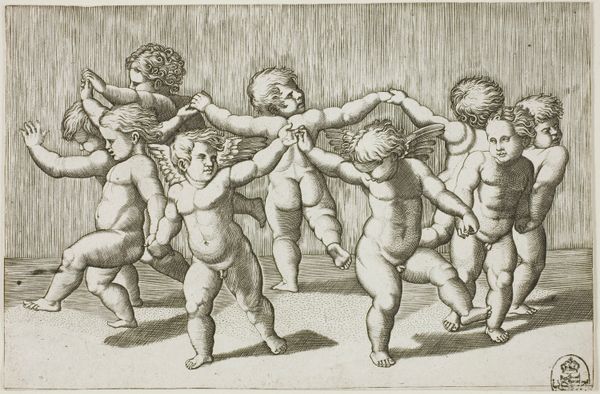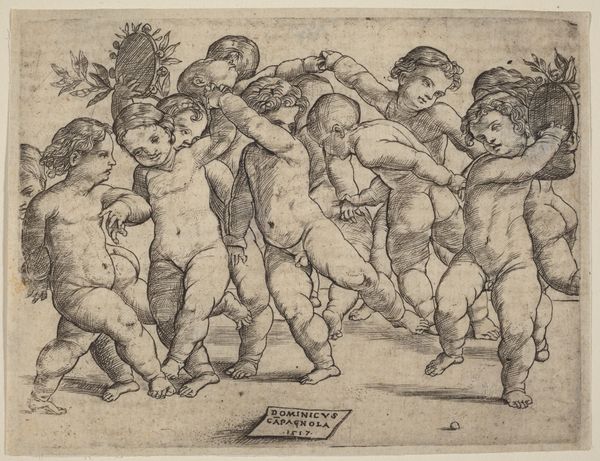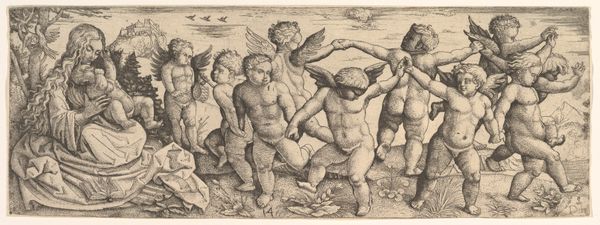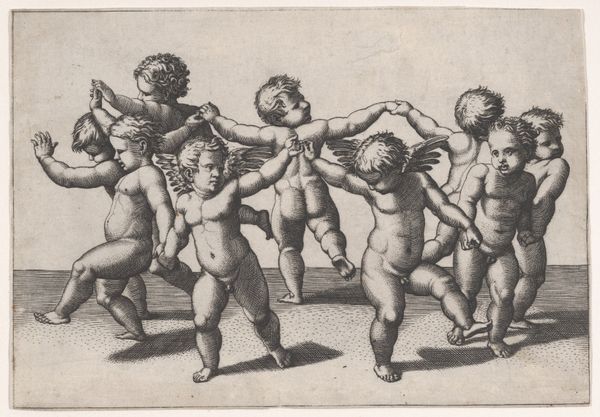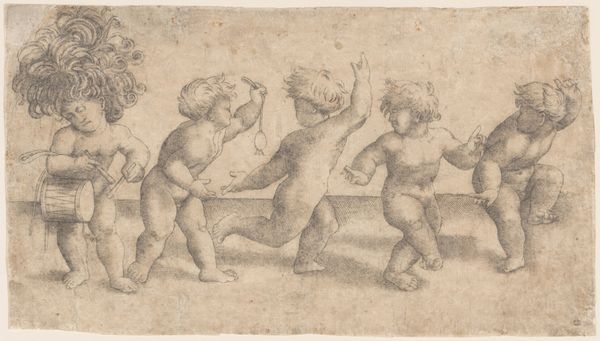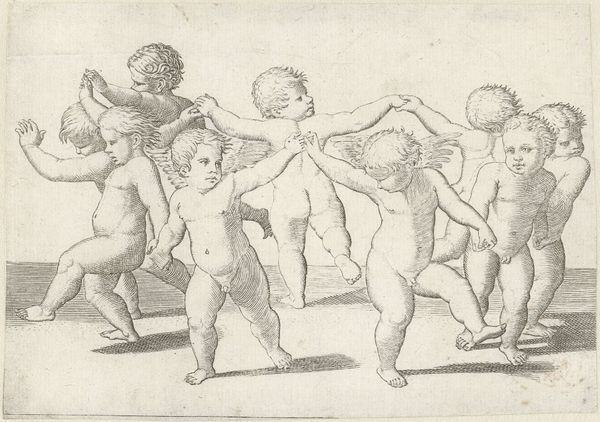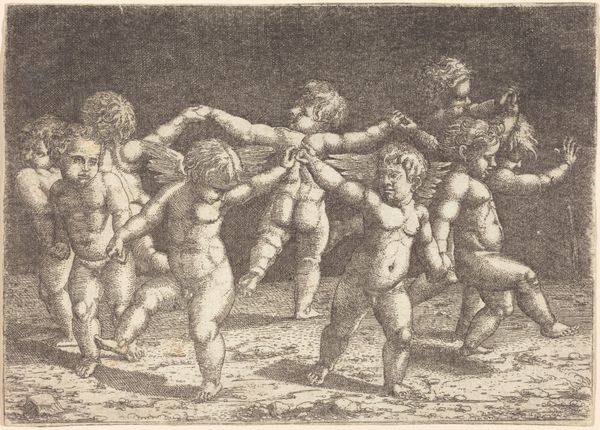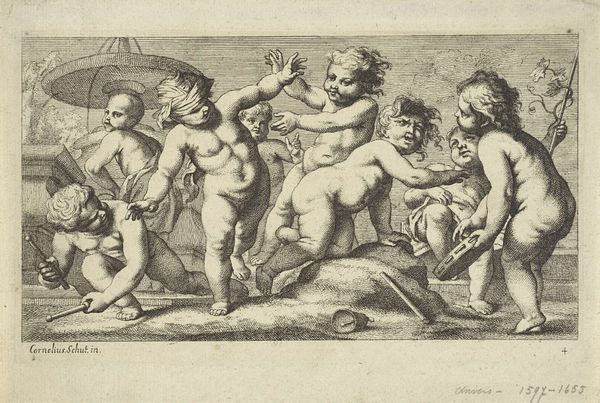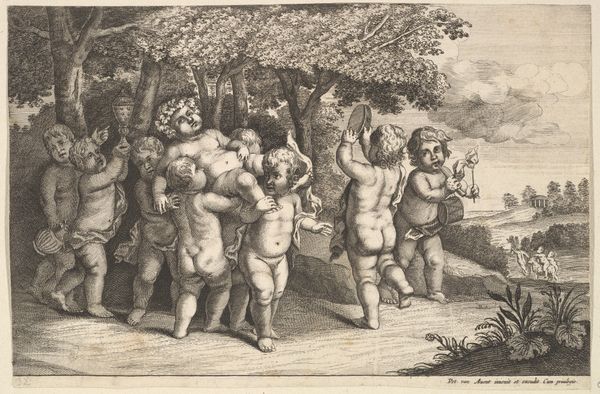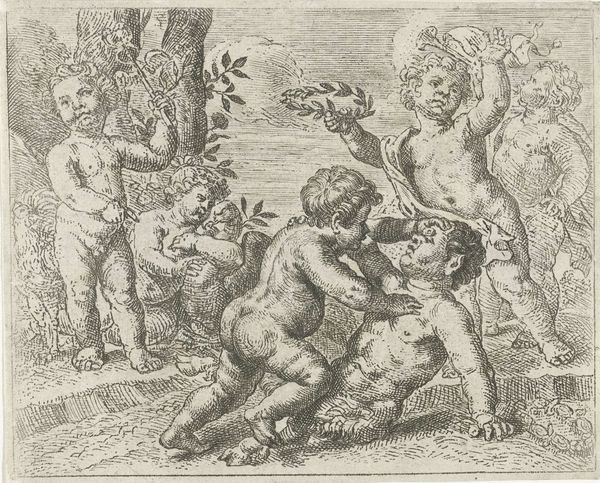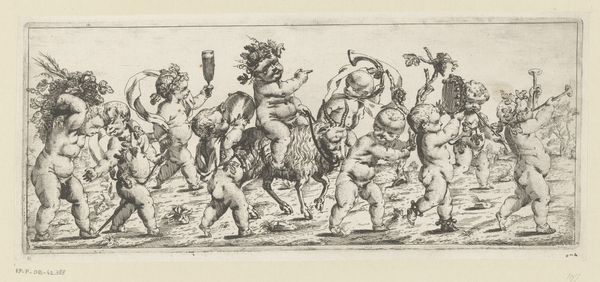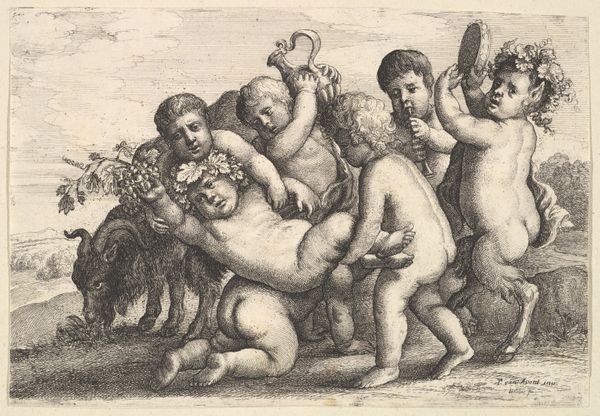
print, etching, engraving
#
allegory
# print
#
etching
#
figuration
#
11_renaissance
#
group-portraits
#
engraving
Dimensions: height 106 mm, width 170 mm
Copyright: Rijks Museum: Open Domain
Curator: The atmosphere of this etching is simply captivating! It's bustling with a delightful scene—what do you think? Editor: Indeed, "Dancing Putti," a print created sometime between 1517 and 1575 by an anonymous artist, shows a circle of chubby cherubs rendered with fine lines and textures. I wonder about the conditions of its production and use... were these prints aimed at wealthy patrons, perhaps? Curator: I find the very depiction of these cherubs dancing hand-in-hand extremely compelling when situating the artwork historically, given the period’s notions of childhood innocence, divinity and play. This idea that childhood could symbolize grace really set the stage for subsequent art periods too. The cherubs even have unique expressions as well as detailed hair and musculature. Editor: It’s intriguing how the act of reproducing and disseminating this image democratizes the concept of 'grace,' detaching it from solely aristocratic or ecclesiastical settings. The print, made from etching and engraving techniques, bears witness to repetitive actions— biting with acid, scoring lines in metal. There's a palpable contrast between those actions and the illusion of ease that the dancing cherubs evoke. Curator: That contrast you mention speaks volumes about how art often mediates our realities—between the physical and ephemeral, struggle and lightness. Were these images, perhaps, deployed during times of great social tension to offer visions of peace and respite, albeit fleetingly? After all, who commissions and collects such art defines how society at large ascribes value, then and now. Editor: Right—the labor, the materiality, and then the potential distribution networks speak directly to socio-economic contexts which also implies this piece, made using printmaking's inherent reproducibility, hints at nascent mass consumption patterns even during the Renaissance. I see these material aspects echoing far beyond the immediate historical context. Curator: I’ve gained insight into the piece just by dissecting the process and historical implications together with you! It is incredible to look back at art eras with current social awareness, right? Editor: Absolutely, together we see that what looks straightforward to the eye can reveal layers about both creation and circulation and who gets to be the ultimate consumer of it.
Comments
No comments
Be the first to comment and join the conversation on the ultimate creative platform.
